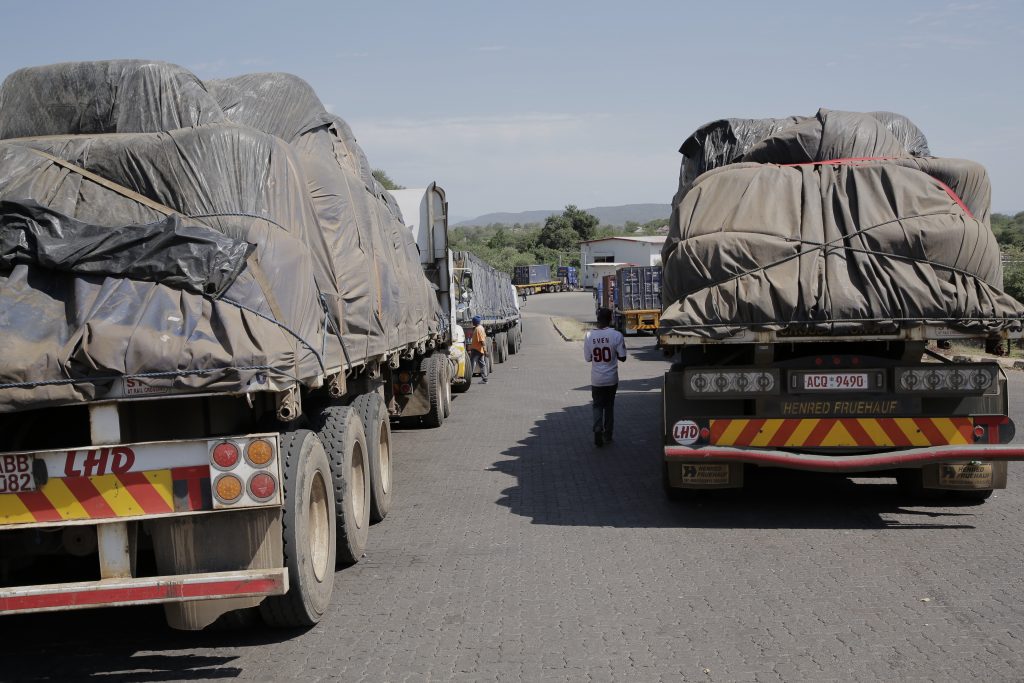
The implementation of the African Continental Free Trade Area whose trading commenced on 1st January 2021 is expected to provide the missing ingredient to intra-COMESA trade, according to a research expert at the COMESA Secretariat.
In a paper titled: AfCTA – A Stimulant to Intra COMESA Trade, Senior Research Fellow, Mr. Benedict Musengele highlighted the benefits that the regional bloc stands to reap from the continental platform.
Among them is the elimination and resolution of some of the challenges associated with multiple and overlapping membership in COMESA. This will be achieved through the harmonization of integration policies for the existing regional economic Communities (RECs) Free Trade Areas.
A total of 36 African countries have ratified the AfCTA agreement and deposited their instruments of ratification, 12 of which are COMESA Member States namely: Kenya, Rwanda, Djibouti, Eswatini, Uganda, Egypt, Ethiopia, Zimbabwe, Tunisia, Mauritius, Malawi, and Zambia. COMESA non-FTA Member States, Eswatini and Ethiopia have ratified the AfCFTA agreement and are extending preferential tariff treatment to other State Parties including COMESA Member States.
This implies a wider and larger market for COMESA Member States,” Mr Musengele states.
The report notes that AfCFTA will progressively eliminate tariffs on intra-African trade, making it easier for African businesses to trade within the continent and benefit from the growing African market. This will make it more affordable for informal traders to operate through formal channels, which offer more protection.
Mr Musengele says this can be further enhanced by introducing a Continental Simplified Trade Regime (CSTR), since cross-border traders operating under such a regime would no longer be trading informally.
“The COMESA Simplified Trade Regime (STR) could be used as a model for establishing the continental STR. The STR is currently operational only in COMESA and EAC,” the report states.
The AfCFTA through the duty-free access to the huge market will also encourage manufacturers and service providers to increase production to serve the enlarged market. Given that most of the trade in Africa takes place among neighbouring countries, this will lead to enhanced production and trade among neighbouring COMESA Member States.
Further, the AfCFTA will stimulate the formation of regional value chains to ease production and supply to the enlarged market. COMESA Member States producers will therefore easily join the regional value chains such as the leather and leather products, textile, wood and paper, agro-foods, sugar, beverages, vegetables, fruit, nuts and rice. This will enhance their production efficiencies, increase their profit margins and consequently integrate into the global value chains.
The report notes that AfCFTA has the potential to reduce external imports from external sources and increase intra-REC and African trade by opening more regional markets through improved infrastructure connectivity, and a larger market which will enhance competitiveness, increase value addition and productivity.
This combined with enhanced trade promotion and market information sharing will increase intra-COMESA and African trade,” Mr. Musengele notes. “The leading imports from EU such as food and live animals are readily available in COMESA and the region has huge potential to produce manufactured goods and pharmaceuticals.”
Intra-COMESA trade have grown from US$1.5 billion in 2000 when the regional free trade area was established to US$ 10.9 billion in 2019.
The AfCFTA brings together 55 AU Member States with a total population of about 1.3 Billion and a combined GDP of about US$ 3.4 Trillion. It is estimated that the AfCFTA has the potential to boost intra-African trade by 52.3 percent through tariff liberalization and this could be doubled with the reduction of non-tariff barriers.

